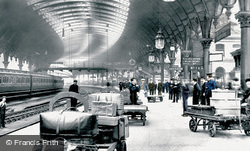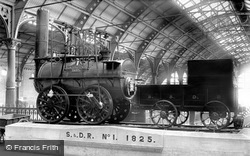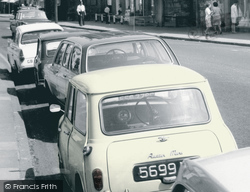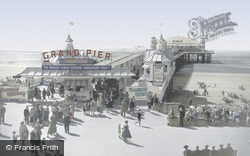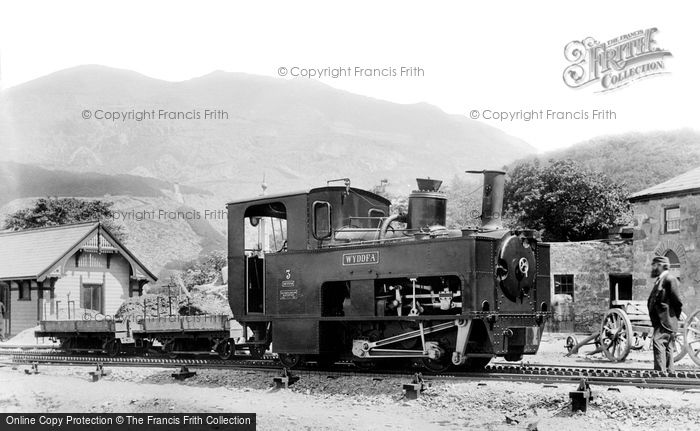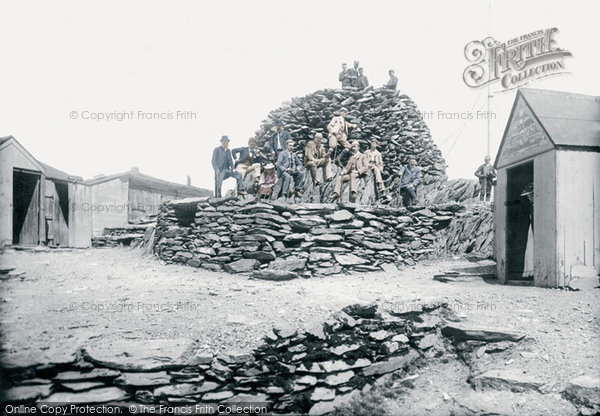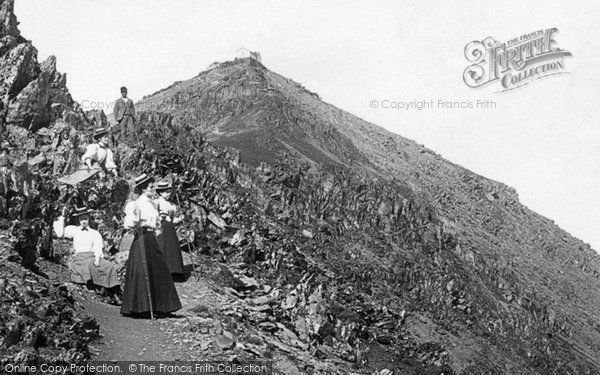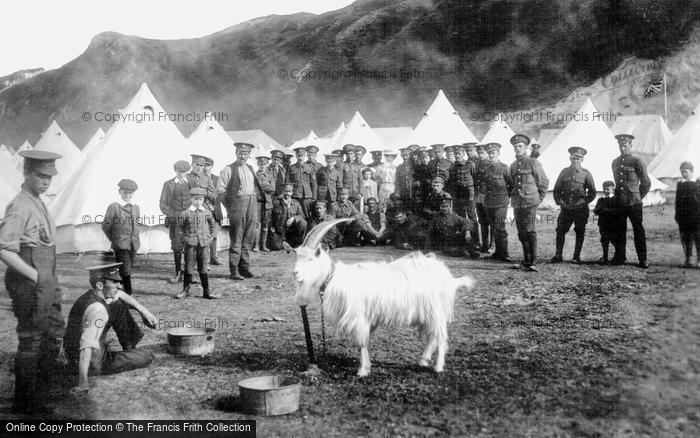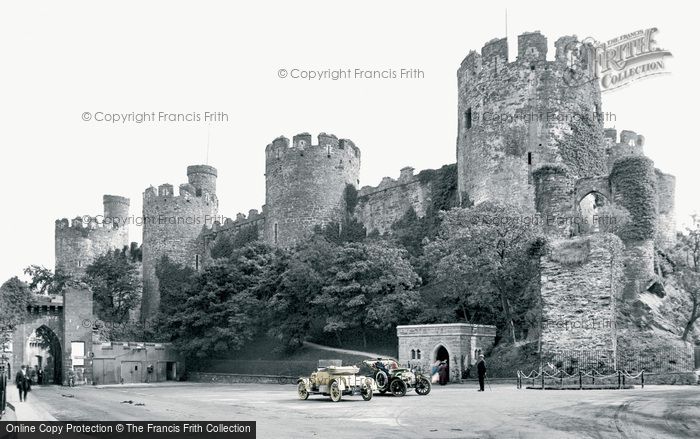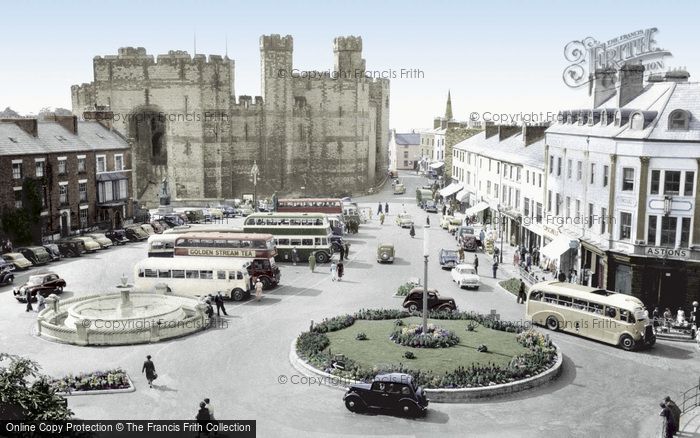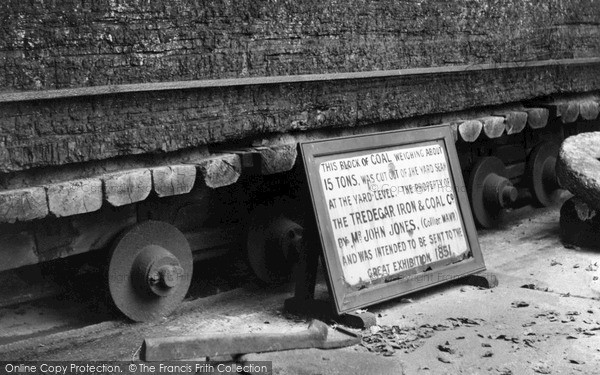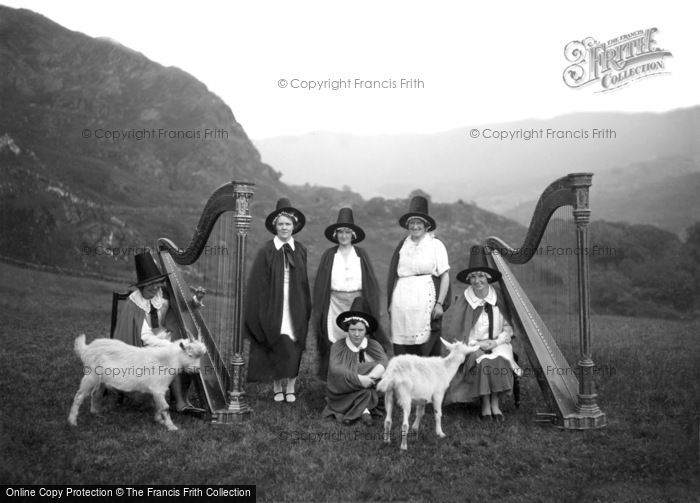Happy St David's Day
Published on
February 28th, 2023
To celebrate St David's Day, a day of Welsh national pride, we bring you this selection of some of our favourite nostalgic Welsh photographs from The Francis Frith Collection. Dydd Gŵyl Dewi Hapus!
'When the evening sun falls over St Davids Cathedral, gilding the old stone, shining on the gentle green hills, the white twisting roads and the little farms, the smallest “city” in the kingdom lies lost in its mighty memories. The sea wind drops, the smoke rises upward from the chimneys, and a man looking at the church in the hollow knows it to possess the longest memory in Britain.' These words by H V Morton sum up the charm of this city.
Visitors came in increasing numbers after the Snowdon Mountain Railway opened in 1896, which provided easy access to the summit for hundreds of holidaymakers. The railway is the only rack railway in Britain, running for just over four-and-a-half miles from Llanberis to Snowdon Summit. Here we see the brand new locomotive No 3, 'Wyddra', ascending out of Llanberis towards Snowdon. The line climbs over 3,000ft, with an average gradient of 1 in 7.
Snowdon, rising to 3,565 feet, is the highest mountain in Wales. Mountain guides offered their services to intrepid Victorian walkers wanting to ascend Snowdon. The serious expression on the faces of the young men, one clad in plus fours, posing for their photograph on the summit cairn, suggests the effort involved. A number of wooden cabins, euphemistically described as 'hotels', offered shelter and refreshment.
A ladies walking party pauses to rest and enjoy the spectacular view in this scene taken by a Francis Frith photographer in 1895. Snowdon in Gwynedd is the highest mountain in Wales, rising to 1085 metres (3,565 feet). Its Welsh name is ‘Yr Wyddfa’, said to mean ‘the barrow’ (a burial mound) and legend says that a giant called Rhita Fawr who was slain by King Arthur lies buried beneath it. It was the Anglo-Saxons who gave the mountain the name of ‘Snow-dun’, meaning ‘the hill of snow’. Today the mountain gives its name to the Snowdonia National Park, a popular playground for outdoor sports enthusiasts.
We understand that the Royal goat tradition began in 1844 when Queen Victoria presented the Royal Welch Fusiliers with its first one, but it is believed the animals have been part of parades since the 1700s. Here we see the very well cared for military goat posing in 1908 for the Frith photographer at the army camp in Conwy, North Wales.
In March 1283 Edward I ordered Conwy Castle to be built and a burgh established. His choice of site was deliberate: here was the royal hall of Llywelyn the Great and the Cistercian Abbey of St Mary where he lay buried. The castle had high curtain walls studded with massive drum towers; the King's apartments and Presence Chamber were in the inner ward.
The great castle of Edward I overpowers this scene as, of course, it was originally intended to do, and its distinctive polygonal towers distinguish it from other castles that Edward built. Started in 1283 by Master James of St George, it was taken briefly when the Welsh revolted in 1294. It was later strengthened and work finished in 1330. The Welsh had to live outside the town walls. Here we see the modern town square filled with coaches for holidaymakers and locals alike. The fountain and the municipal flowerbed, splendid symbols of civic pride, are sadly no longer with us.
Tredegar is a former mining village in the Sirhowy valley of South Wales. This huge lump of coal, weighing about 15 tons, was cut by the expert collier Mr John Jones, an employee of the Tredegar Iron & Coal Co. It was a great feat to extract such a weight. The coal was intended to be sent to the Great Exhibition held in the Crystal Palace in London in 1851, but it was too heavy to move. It is now on display in Bedwellty Park in Tredegar, covered by a roof and with a pit cage alongside to commemorate Tredegar’s coal-mining heritage. Tredegar’s most famous son was the Labour Party politician Aneurin Bevin (1897-1960), who wrote of the coalminer’s lot: ‘In other trades, there are a thousand diversions to break the monotony of the work - the passing traffic, the morning newspaper, above all the sky, the sunshine and the rain. The miner has none of these. Every day for eight hours he dies, gives up a slice of his life and buries himself.’
A posed photograph of a harp choir dressed in traditional Welsh costume set against the backdrop of Beddgelert, Snowdonia. Oh, with goats! Do you think you could see a more 'Welsh' scene? Of course, we simply had to include this Archive photograph from 1938.
You may be interested in these related books:
Printed specially for you and with a free personal dedication available on almost all our titles with hundreds to choose from, our nostalgic local books make great gifts for someone or why not treat yourself and add some history to your bookshelves?
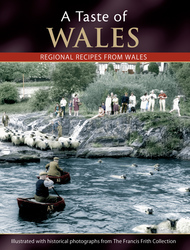
Free optional inscription available!
A Taste of Wales
Travel around Wales through the pages of this book and discover the delicious variety of this beautiful country's traditional dishes and produce. Over 40 recipes are included, some traditional, some reflecting famous local produce, and some versions adapted to suit modern tastes. Your journey will be given added savour by the delightful period photographs from The Francis Frith Collection, showing the people and places of Wales in the past. This book also includes information about the stories behind some of the recipes, as well as a number of fascinating facts about Welsh life and heritage, helping to convey a true flavour of Wales.
A Taste of Wales
(ISBN: 978-1-84589-463-4)
Compiled by Julia Skinner
You may be interested in these related books:
Printed specially for you and with a free personal dedication available on almost all our titles with hundreds to choose from, our nostalgic local books make great gifts for someone or why not treat yourself and add some history to your bookshelves?
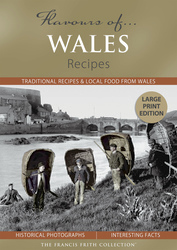
Free optional inscription available!
Flavours of Wales
Feeling nostalgic and hungry for a Welsh Cake? Or perhaps a bowl of Cawl Cennin, or some Honeyed Welsh Lamb? Then this is the book for you! Nothing beats good home cooking, with delicious dishes made from local produce, or using traditional recipes - just like Granny used to make! Here is a selection of recipes from Wales, some traditional, some reflecting local products that Wales is famous for, some linked to characters or historical personages or events, and some versions adapted to suit modern tastes. Discover the delicious variety of traditional Welsh dishes, and find out about the stories behind the recipes, as you use this book to cook up a true flavour of Wales! Illustrated with nostalgic historical photographs from the world famous Francis Frith Collection, this book is a delightful dip into the food and flavours of Wales.
Flavours of Wales
(ISBN: 978-1-84546-975-7)
This post has the following tags:
Archives,Nostalgia.
You may find more posts of interest within those tags.
Join the thousands who receive our regular doses of warming nostalgia!
Have our latest blog posts and archive news delivered directly to your
inbox.
Absolutely free. Unsubscribe anytime.



